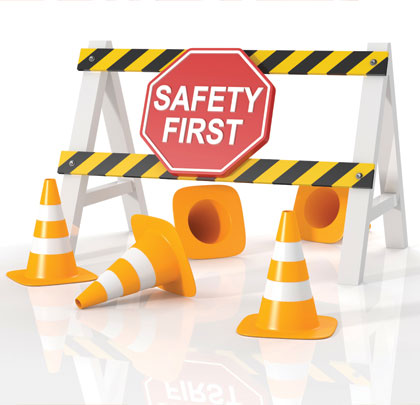Success on any project depends on keeping it on time and on budget. A number of problems can set a project back, but accidents remain a too-frequent cause of delays and a danger to workers. Serious accidents may even shut a project down while an investigation takes place. And it’s well known that a commitment to safety can help reduce these accidents that cause injuries and lead to costly delays.
A strong safety culture starts at the top. To help ensure that a project stays on schedule, the superintendent needs to bring safety to the forefront and to have the support of all the subcontractors.
To make safety a priority for all workers, superintendents must hold subcontractors to the same high standards as their own employees, with no exceptions. Be prepared for the “I didn’t know I had to do that,” response. Safety expectations must be outlined in the contract documents and clearly communicated at the project site. Contractually, outlining site-specific safety requirements puts all subcontractors bidding for the project on the same playing field.
Some best safety practices include:
- An orientation for all employees, signed and on file, that provides an overview of the project, and an in-depth review of safety requirements and expectations. If necessary, the orientation should be provided in more than one language.
- A designated safety representative for the project, and a full-time safety representative with no other duties when the number of employees meets a certain threshold, say 75.
- A minimum safety-training requirement for all workers. Safety isn’t just common sense. Workers need to be trained on safety equipment and procedures. Subcontractors’ foremen should be required to meet a training standard, such as an OSHA 30-hour certification.
- A fall management program that includes 100 percent fall protection at heights starting at 6 feet, across all trades. Falls remain the leading cause of deaths in the industry.
- A job hazard analysis for all tasks to identify potential risks and specify the best method to minimize or eliminate those hazards. The job hazard analysis should be performed by subcontractors in coordination with the superintendent.
- Documented daily safety audits by subcontractors to track any safety issues, lapses, and corrective measures so that the superintendent can be confident that the tasks are being performed safely.
- A disciplinary policy that spells out the actions to be taken for violations of the project safety requirements from warnings to removal of workers for zero-tolerance hazards such as fall protection or LOTO. (Lockout/Tagout)
Whether caused by a company’s own employees or those of a subcontractor, incidents will have a negative impact on a project, potentially causing delays and leading to third-party claims against the general contractor. There are hard and soft costs to consider when hiring subcontractors, and superintendents can prepare from the beginning to have a much better conclusion to the project.
A superintendent needs a team dedicated to embedding safety into the job every day, as well as the right processes and tools. That team must include every subcontractor on the project. Because a robust safety culture starts at the top, the superintendent must demonstrate an unwavering commitment to safety and communicate that to all subcontractors every day to make safety a key measure of success. ■
About The Author:
Geoffrey Hall is the senior vice president of ACE Construction. Allen Abrahamsen is the assistant vice president of Construction Safety Services for ESIS® Risk Control Services. ACE USA is the U.S.-based retail operating division of the ACE Group. ACE USA, through its underwriting companies, provides insurance products and services throughout the U.S. Additional information on ACE USA and its products and services can be found at www.aceusa.com.
_________________________________________________________________________
Modern Contractor Solutions, December 2013
Did you enjoy this article?
Subscribe to the FREE Digital Edition of Modern Contractor Solutions magazine.



